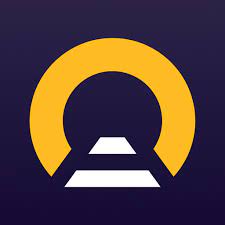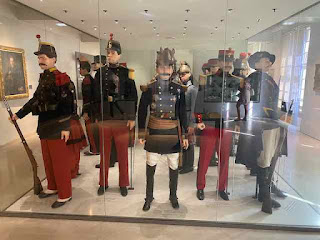Veteran of four wars, four enlistments, four branches: Air Force, Army, Army Reserve, Army National Guard. I am both an AF (Air Force) veteran and as Veteran AF (As Fuck)
Saturday, October 21, 2023
Friendship & Politics: 15th Annual Conference at the Hannah Arendt Center, Bard College
Thursday, October 12, 2023
Friday, October 6, 2023
Yom Kippur War, 50th Anniversary, Remembering the Carnage of Armor
On 2pm on October 6, 1973, near the end of the Yom Kippur fast by Jews, Egypt and Syria, backed by auxilliary soldiers from many Arab nations, attacked Israel. It was a surprise attack with devastating Israeli losses of 2,521 killed and more than 8,000 wounded.
This week I learned that in addition to the soldiers from Arab countries who went to Egypt and Syria to fight, Cuba sent 500 tank commanders to the Syrian Army. These tank commanders led crews that fought in The Valley of Tears near Mount Bental in the Golan Heights between Israel and Syria.
In the battle, 160 Israeli tanks stopped the advance of 1,500 Syrian tanks. The Syrian tanks had to funnel through a narrow valley. At the end of the battle 153 of the Israeli tanks were damaged or destroyed. Nearly all the Israeli casualties in the battle were tank crewmen. Only seven Israeli tanks survived the fight.
The Syrians lost more than 600 tanks with many more damaged. Thousands of armor crewmen in these Soviet-built tanks were killed and wounded. Of the Cuban tank commanders, 188 were killed, 250 were wounded. Just 62 went back to Cuba uninjured after the war.
In June of 1975, I re-enlisted in the Army and went to Fort Knox, Kentucky, for Armor School. The 1973 Yom Kippur War informed a lot of what we learned about tank tactics and about the short, violent life of tank crews in war. For instance, we were given the breakdown of casualties among Israeli tank crewman in the Yom Kippur War.
Tank Commander 60%
Gunner 25%
Loader 10%
Driver 5%
Tank commanders, according to the reports, "suffered fatal head injuries and hideous face and neck wounds." They had their hatch open and heads out to see the fight. Which helps to explain why almost 90% of the Cubans were killed or injured fighting on the losing side of one of the biggest tank battles in history.
Within three days, the Israel Defense Force rallied and launched counter attacks against the invading armies. By October 25, the IDF was shelling Damascus and was less than 60 miles from Cairo.
Thursday, September 28, 2023
Ig Nobel Prizes 2023
Saturday, September 23, 2023
Post COVID, Laundromats are Lonely Places
In three of the seven countries I visited on this trip, I went to a laundromat. When you travel with just a backpack, clean clothes run out fast. In Vienna, Paris and Brussels I washed my clothes, in each case wearing the last clean shorts and t-shirt I had left.
Earlier this year, in Zurich, I got help with getting change for a laudromat. But since the COVID pandemic, I don't talk to fellow travelers in laudromats anymore. The laundromats are empty. We go to nearby coffee shops or parks while the clothes are washing and drying. The delightful conversations I have had in laundromats in Paris with tourists from from Australia, and three sisters from America are a thing of the past. And the amazing conversations I had in a Jerusalem laundromat will not be duplicated.
But laundromats are still far cheaper than baggage fees or dragging a big suitcase, so I will still be searching "laundromat" on Google wherever I go.
Tuesday, September 19, 2023
Eurail Pass App--So Much Better and Cheaper than Tickets
When I wrote about airlines, good and bad, my conclusion was: choose the airline with the best app, because data matters. This year I bought a Eurail pass rather than individual tickets partly based on great reviews of the app. My experience was better than my best expectations.
I bought a seven-day pass in one month. It allowed me to pick any seven travel days in a thirty-day period and travel as much as I want on those days. I could book the tickets in advance or just take the next train as I arrived in the station. I did both.
The advance ticket was for the last travel day. I took the Eurostar from Brussels to London. It required a reserved seat which I bought through the app two weeks in advance. Many trains require buying seat reservations and on the most popular trains the seats can only be reserved on line well in advance.
But in major stations you can buy a seat any time up to departure in their ticket offices. I had to do this with several tickets. But in person the reservations are often cheaper than on line.
When buying tickets from on line apps, the prices rise cheap to pricey to crazy as the departure approaches. The Eurail app allows last-minute changes with no penalty. Any train in the network (most trains) are included in the price of the pass. I have seen Eurostar tickets costing nearly $300. Mine cost $51--one seventh of the $358 cost of my Eurail pass.
One of my travel days was from Vienna to Geneva--11 hours on two trains. The prices on Omio range from $227 to $304. With the Eurail pass, it was $51 plus a $12 seat reservation. My trip from Amsterdam on the four-hour express train would be $180. The 6.5-hour slower train $94. I took an unreserved fast train.
When I was in Grenoble, I could not book a seat reservation for Paris. Grenoble did not have a ticket office. So I took an unreserved train to Lyon, then got a seat reservation to Paris for $20.
When I left Paris for Caen in Normandy, I could not book the seat reservations on line. I went to Gare Montparnasse and made the reservations in Person using the SNCF on line system in the station. The seat reservations were $2 each way.
The seven days of rail travel:
August 26: Amsterdam to Frankfurt
August 29: Darmstadt to Vienna
August 31: Vienna to Geneva
(September 1, bought a $20 local train ticket from Geneva to Grenoble to avoid using a travel day.)
September 3: Grenoble to Paris (through Lyon)
September 8: Paris to Caen
September 9: Caen to Brussels (through Paris)
September 13: Brussels to London
Saturday, September 16, 2023
Musee de l'Armee in Paris: A Vast Museum of French Military History
On this trip to Paris, I visited the Musee de l'Armee or the Army Museum. With more than 500,000 artifacts in 12,000 square meters (3 acres) of space, I walked a couple of miles seeing nearly a millennium of French military history. The museum is located in the shadow of the Eiffel Tower on the south bank of the Seine River in the Invalides area of Paris.
Poet Flyer by E. John Knapp, a Review
E. John Knapp ’s Poet Flyer surprised me. The beginning of the story is routine and predictable as a war memoir. Whirlwind love. Whirlwin...

-
Tasks, Conditions and Standards is how we learn to do everything in the Army. If you are assigned to be the machine gunner in a rifle squad...
-
The Remains of the Day by Kazuo Ishiguro Kazuo Ishiguro’s The Remains of the Day is, on the surface, a beautifully restrained novel about...
-
On 10 November 2003 the crew of Chinook helicopter Yankee 2-6 made this landing on a cliff in Afghanistan. Artist Larry Selman i...
































